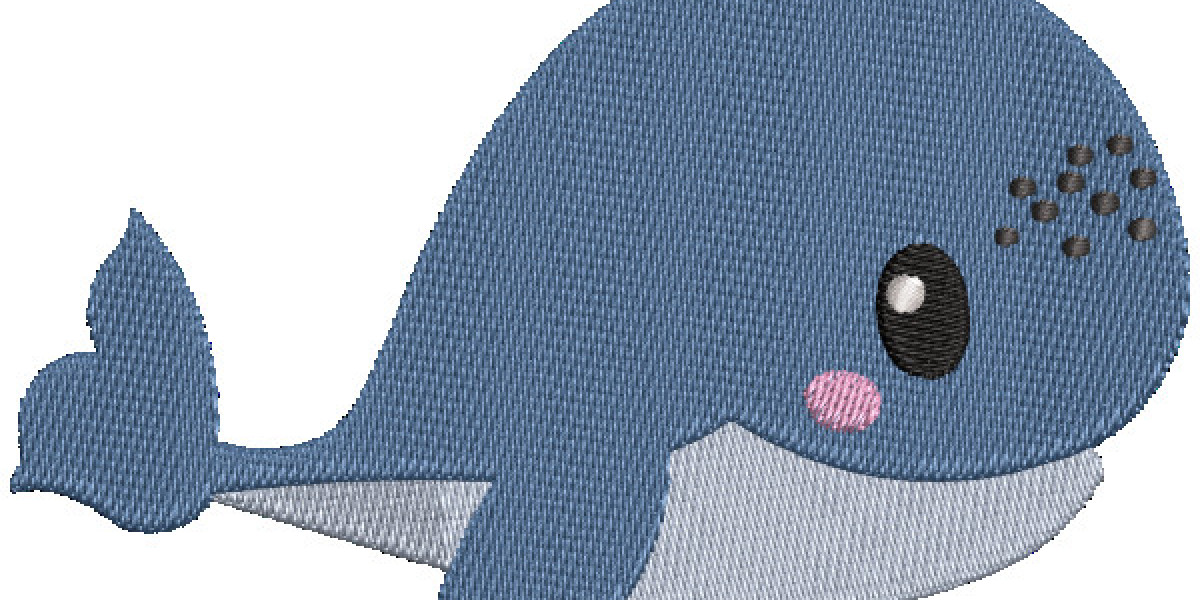Machine embroidery digitizing converts artwork, patterns, or text into digital stitch files (e.g., DST, PES) that embroidery machines use to create precise designs on fabrics. For fashion designers, digitizing services offer a powerful tool to incorporate intricate, professional embroidery into collections, elevating garments with unique textures and details. Professional services like ZDigitizing deliver optimized stitch files in 2-12 hours for $10-$20 per design, tailored for diverse fabrics and machines, making them accessible for designers without costly software or expertise. This comprehensive blog explores machine embroidery digitizing services for fashion designers, detailing their benefits, process, and applications in the fashion industry. A concise FAQ section at the end addresses common questions to guide designers in achieving stunning embroidered designs.
Why Digitizing Services Matter for Fashion Designers
Fashion designers rely on embroidery to add sophistication, personalization, and brand identity to their creations, whether for haute couture, ready-to-wear, or boutique collections. Digitizing services enable designers to translate intricate patterns, logos, or monograms into high-quality stitch files, ensuring precision and consistency across garments. By outsourcing to professionals, designers avoid the high costs of digitizing software ($1,000-$5,000) and technical training, focusing instead on creativity and production. Services like ZDigitizing cater to the unique needs of fashion, handling delicate fabrics, complex designs, and tight runway or launch deadlines.
Benefits of Professional Digitizing for Fashion Designers
Outsourcing digitizing offers tailored advantages for fashion designers:
1. Enhanced Design Aesthetic
Intricate Details: Optimized stitch files ensure sharp, vibrant patterns, logos, or text, enhancing the visual appeal of garments.
Specialty Techniques: Supports 3D puff, appliqué, or metallic threads for textured, high-fashion effects.
Custom Patterns: Enables unique embroidery designs, from floral motifs to monograms, setting collections apart.
Impact: Elevates garments with premium, eye-catching embroidery, appealing to high-end or niche markets.
2. Fabric and Garment Compatibility
Diverse Fabrics: Files are optimized for delicate materials (e.g., silk, chiffon), stretchy knits, or heavy denim, preventing puckering or distortion.
Garment-Specific Settings: Tailored for specific placements (e.g., cuffs, collars, or panels) and hoop sizes, ensuring precision.
Machine Compatibility: Supports home machines (e.g., Brother PE800) and commercial ones (e.g., Tajima), with formats like PES or DST.
Impact: Ensures flawless embroidery across varied fashion pieces, from dresses to jackets.
3. Cost-Effective for Small Runs
Affordable Pricing: Rates of $10-$20 per design, with bulk discounts (10-20% off for 5+ designs), are budget-friendly for small collections.
No Software Costs: Eliminates investment in digitizing software or training.
Reduced Waste: Optimized files minimize thread and fabric waste, lowering production costs.
Impact: Enables emerging designers to create high-quality embroidery within budget constraints.
4. Fast Turnarounds for Runway Deadlines
Rapid Delivery: Services like ZDigitizing provide files in 2-12 hours, with rush options under 2 hours, ideal for tight schedules.
Efficient Revisions: Unlimited revisions, processed within hours, ensure designs meet creative vision.
Scalable for Collections: Streamlined processes support multiple designs for cohesive collections.
Impact: Meets deadlines for fashion shows, pop-up shops, or seasonal launches.
5. Accessibility for Designers
No Technical Skills Needed: Designers provide artwork and specifications, with professionals handling complex digitizing.
User-Friendly Platforms: Secure portals and 24/7 support simplify submissions and communication.
Creative Freedom: Enables experimentation with intricate or bespoke designs without technical barriers.
Impact: Empowers designers of all experience levels to incorporate professional embroidery.
6. Sustainability
Resource Efficiency: Optimized stitch paths reduce thread and fabric waste.
Digital Workflows: Paperless uploads, previews, and delivery minimize environmental impact.
Eco-Friendly Fabrics: Files support sustainable materials like organic cotton or recycled polyester, popular in modern fashion.
Impact: Aligns with eco-conscious consumer trends, enhancing brand appeal in sustainable markets.
The Process of Outsourcing Digitizing for Fashion Designers
Outsourcing digitizing for fashion embroidery is straightforward and designer-friendly. Here’s how to do it effectively:
Choose a Reliable Provider (5 minutes):
Select a service like ZDigitizing with expertise in fashion embroidery, strong reviews, and support for formats like DST, PES, or JEF.
Ensure they offer digital previews, unlimited revisions, and 24/7 support.
Prepare Artwork (5-10 minutes):
Use high-resolution (300 DPI) JPG, PNG, or AI files with clear, bold designs (3-5 colors, elements at least 0.1 inches wide).
For intricate patterns (e.g., florals, geometrics), simplify gradients or fine details using tools like Adobe Illustrator or Canva.
Specify Pantone codes or thread charts for accurate color matching to your collection’s palette.
Submit Artwork and Specifications (5-10 minutes):
Upload via a secure portal with SSL/TLS encryption.
Specify:
Design Size: E.g., 2-3 inches for cuffs, 6-8 inches for jacket backs.
Placement: E.g., collar, sleeve, or chest panel.
Fabric: E.g., silk, denim, knit, or chiffon.
File Format: Check your machine’s manual (e.g., PES for Brother, DST for Tajima).
Techniques: E.g., 3D puff for logos, appliqué for large patterns.
Machine Model: E.g., Brother PE800 or Tajima TMBP for compatibility.
Note specific collection goals (e.g., runway show, sustainable line).
Review Digital Preview (5-10 minutes):
Check stitch patterns, colors, density, and alignment for fabric compatibility and aesthetic alignment.
Verify details like text readability (minimum 0.1-0.25 inches) or pattern clarity.
Request revisions for issues like gaps or distortion, processed within hours.
Download File (1-2 minutes):
Receive the optimized file in 2-12 hours via a secure link.
Test and Produce (10-20 minutes):
Test on scrap fabric matching your garment (e.g., silk for dresses, denim for jackets) with appropriate stabilizers (e.g., tear-away for lightweight fabrics, cut-away for stretchy ones).
Check for puckering, thread breaks, or misalignment, contacting support for quick fixes.
Produce final garments with high-quality threads and correct machine settings, starting with a small batch for consistency.
Total User Time: ~20-50 minutes, with the provider handling technical digitizing tasks.
Tip: Create a design log to track successful stitch files and settings for future collections, streamlining reorders.
Applications for Fashion Designers
Digitizing services enhance a variety of fashion projects:
Haute Couture: Intricate floral or geometric embroidery on dresses or gowns for runway shows.
Ready-to-Wear: Logos or monograms on T-shirts, jackets, or skirts for boutique or e-commerce lines.
Sustainable Fashion: Embroidered designs on organic cotton or recycled polyester for eco-conscious collections.
Streetwear: Bold 3D puff logos or text on hoodies, caps, or denim for urban fashion brands.
Accessories: Embroidered patterns on scarves, bags, or shoes for unique, marketable pieces.
Bridal Wear: Delicate monograms or lace-like embroidery on veils or wedding dresses for personalized elegance.
ZDigitizing’s expertise ensures professional results for these fashion applications.
Common Challenges and Solutions
Digitizing for fashion embroidery can face challenges, but professional services address them:
Delicate Fabric Damage: Lightweight fabrics like silk or chiffon may tear or pucker.
Solution: Specify fabric type for tailored stitch density (e.g., 0.3 mm) and underlay, verified in previews.
Complex Pattern Distortion: Intricate designs may lose detail on stretchy or textured fabrics.
Solution: Simplify artwork and request optimized stitch types (e.g., satin for outlines, fill for areas).
Color Matching: Inaccurate thread colors disrupt collection cohesion.
Solution: Provide Pantone codes and use formats like PES that store color data.
Small Runway Deadlines: Fashion shows require rapid turnaround.
Solution: Use rush services (under 2 hours) and streamlined workflows from providers like ZDigitizing.
Technologies Supporting Fashion Digitizing
Advanced tools enhance the process for designers:
AI Optimization: Automates stitch mapping, density, and error detection for precise, fabric-specific files.
Cloud Platforms: Enable secure uploads, real-time previews, and delivery, accessible on mobile or desktop.
Encryption: SSL/TLS protocols protect proprietary designs, crucial for exclusive collections.
These technologies ensure efficiency, quality, and security for fashion projects.
Future Trends in Fashion Digitizing
In 2025, digitizing for fashion will evolve with:
Augmented Reality (AR): Preview embroidery on virtual garments for accurate design planning and client approval.
AI-Driven Customization: Automate intricate patterns or dynamic text for personalized collections.
IoT Integration: Sync with smart machines for real-time adjustments, ensuring flawless stitching on delicate fabrics.
These trends will make fashion digitizing faster and more innovative.
Conclusion
Machine embroidery digitizing service for fashion designers empower creators to elevate their collections with professional, intricate embroidery, from haute couture to streetwear. Services like ZDigitizing deliver optimized stitch files in 2-12 hours for $10-$20 per design, tailored for diverse fabrics and machines, requiring minimal designer effort. By selecting a reliable provider, preparing clear artwork, specifying requirements, reviewing previews, and testing files, designers can achieve stunning, durable embroidery that enhances brand identity and market appeal. With AI, cloud platforms, and future innovations like AR and IoT, digitizing services will continue to transform fashion embroidery, delivering precision and creativity for collections in 2025 and beyond.
FAQs About Digitizing Services for Fashion Designers
What is machine embroidery digitizing for fashion designers?
It converts designs into stitch files for professional embroidery on garments, tailored for fashion applications.
Why use digitizing services for fashion?
They ensure intricate, durable embroidery, save costs ($10-$20 vs. $1,000-$5,000 for software), and meet tight deadlines.
How fast are fashion digitizing services?
Files are delivered in 2-12 hours, with rush options under 2 hours.
How much does fashion digitizing cost?
Rates start at $10-$20 per design, with bulk discounts for multiple designs.
What artwork is best for fashion digitizing?
High-resolution (300 DPI) JPG, PNG, or AI files with bold, simple designs (3-5 colors).
What fashion projects benefit from digitizing?
Haute couture, ready-to-wear, sustainable fashion, streetwear, accessories, and bridal wear.
How do I ensure quality fashion embroidery?
Choose a reputable provider, specify fabric and format, review previews, and test on scrap fabric.
What challenges occur with fashion digitizing?
Delicate fabric damage, pattern distortion, or color mismatches; solved with optimized files and testing.
What technologies support fashion digitizing?
AI, cloud platforms, and encryption ensure precision, speed, and security.
What’s the future of fashion digitizing?
AR previews, AI customization, and IoT integration will enhance efficiency and creativity.








